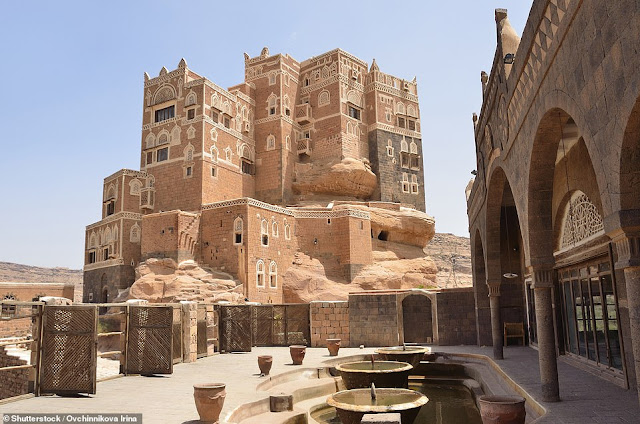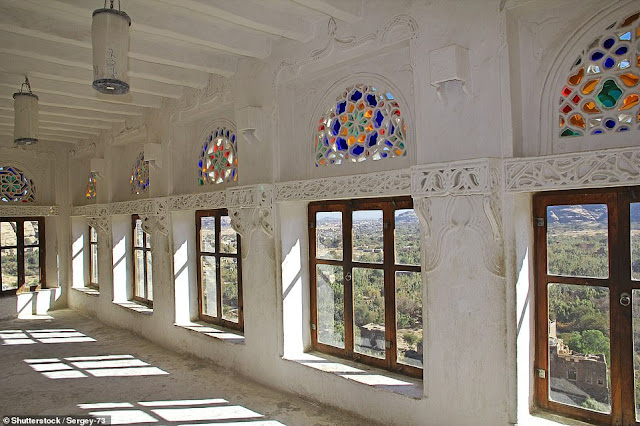Yemen's Dar al-Hajar – or 'stone house' is a rock column behold one of the world's most spectacular constructions. The former royal residence grows out of the rock pinnacle upon which it’s perched. The Dar al-Hajar or “Rock Palace” is located in Wadi Dhar, around 15 km (9 miles) from the capital city of Sana, Yemen. It seems to grow out of the rocks on which it is constructed and it has the characteristic painting of its windows and edges. Yemen’s architecture Dar al-Hajar palace, built atop a tall natural rock spire is nevertheless fantastical.
The five-storey building looks incredible from every angle. So, it won’t be surprised to see Dar al-Hajar on a Yemeni currency note (the 500 rials one). In 1920’s Islamic spiritual leader named Yahya Muhammad Hamiddin (ruler of Yemen from 1904 to 1948) stayed here as a summer residence. This place didn’t leave good memories for Imam Muhammad Yahya as his grandson assassinated him during a coup in Yemen in 1948. Nevertheless, the palace did remain in the ownership of the Yemeni royal family until the Yemen 1962 revolution.
However, Islamic scholar Imam Mansoor Ali Bin Mehdi Abbas constructed atop of the structure on the rock column. This beautiful building has multiple facilities of kitchen, storage area, guest rooms, and sedate courtyard leading through the five-story structure. The main feature of this building is to look like a fortress with shooting emplacements to defend the place from attackers. Therefore, it’s indeed easy on the eye, though designed to withstand attack and its own water supply from deep below the rock', meaning it could 'easily have withstood a siege'.
Now it’s a popular example of Yemeni architecture for tourists, who can see the rooms and explore the labyrinth of staircases. Now Dar al-Hajar has a museum, and tourists paid a visit to the palace have sung its praises on the internet. Its a fantastic place and one of the best things you will see in Yemen. You will have a wonderful experience to see this old Yemeni palace and understand more about the local life and culture.' It is nothing like you have ever seen before to pay a must-visit and relish the exquisite view. The majestic five floors offer enough to relish, but walking around at its base is equally impressive and heightens your admiration.
Product You May Interested
- Feel Emotional Freedom! Release Stress, Heal Your Heart, Master Your Mind
- Worldwide House Sitters & Pet Sitters Directory
- 28 Day Keto Challenge
- Get Your Customs Keto Diet Plan
- A fascinating approach to wipe out anxiety disorders and cure in just weeks, to become Anxiety free, relaxed, and happy.
- Flavor Pairing Ritual Supercharges Women’s Metabolisms
- The best Keto Diet Program
- Boost Your Energy, Immune System, Sexual Function, Strength & Athletic Performance
- Find Luxury & Designer Goods, Handbags & Clothes at or Below Wholesale
- Unlock your Hip Flexors, Gives you More Strength, Better Health, and All-Day Energy.
- Cat Spraying No More – How to Stop Your Cat from Peeing Outside the Litter Box – Permanently.
- Anti-aging nutritional unexplained weight gain, stubborn belly fat, and metabolic slowdown. Reach Your Desired Weight in a Week and Stay There.
- Get All Your Healthy Superfoods In One Drink.






































